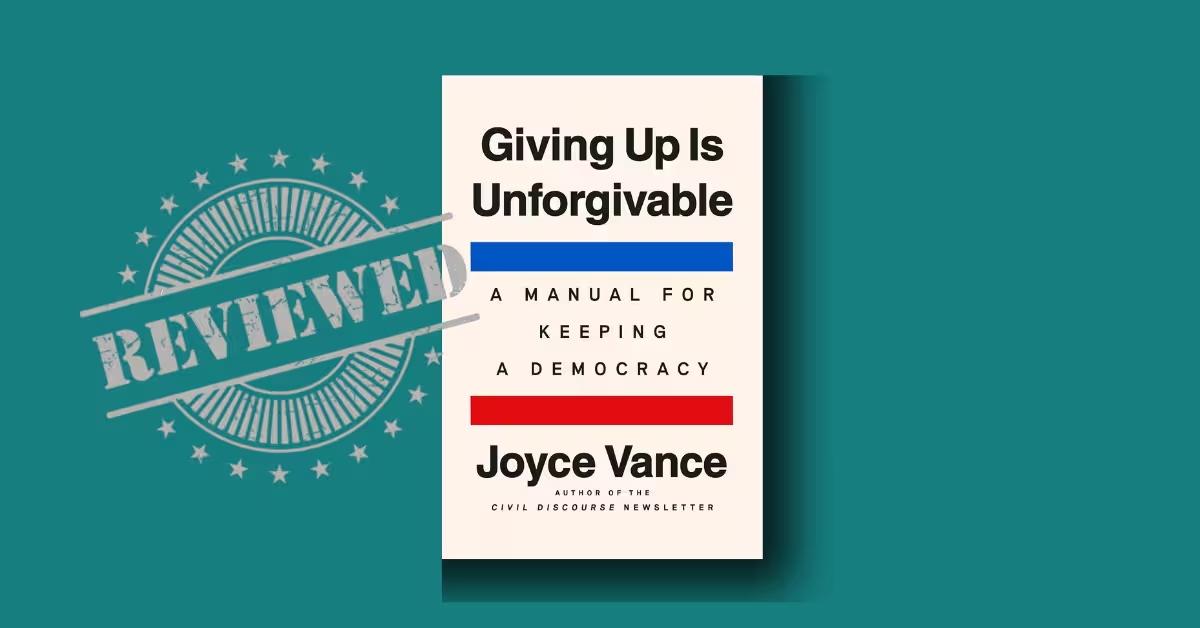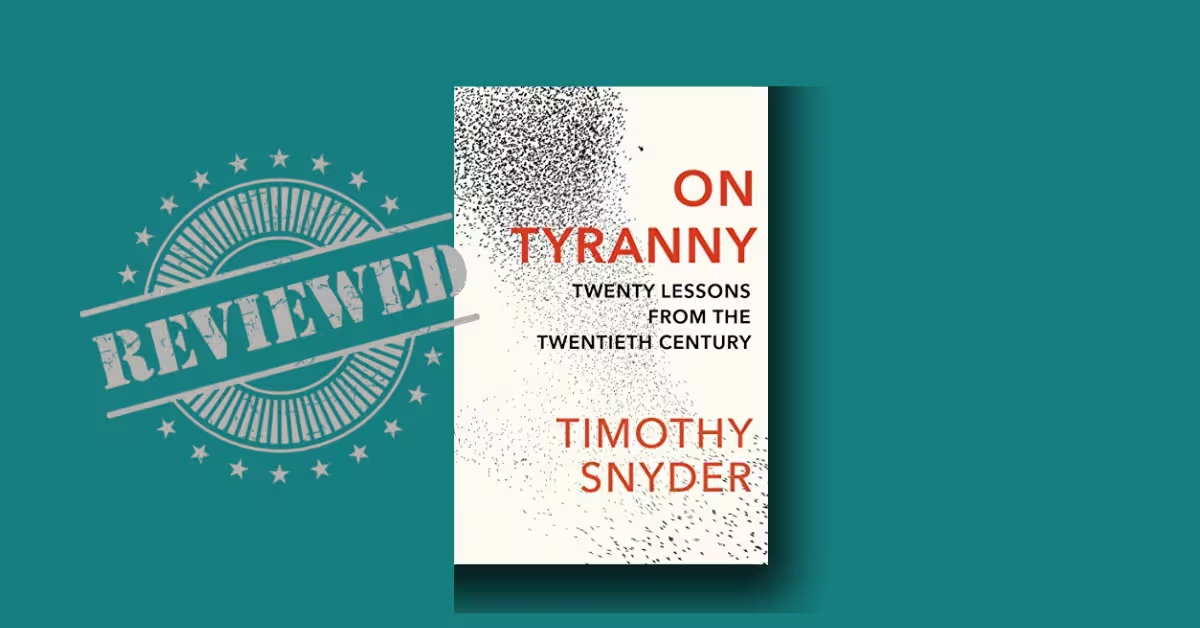How Democracies Die — Steven Levitsky & Daniel Ziblatt (Crown, 2018) is a comparative-political diagnosis of democratic backsliding, rooting the danger in the erosion of norms and the failure of parties to keep authoritarians out. The book blends history, case studies, and a clinician’s diagnostic checklist for identifying democratic threats, showing how elected leaders can legally, gradually, and deceptively hollow out democratic institutions.
Democracies often die with the lights on — by leaders elected through elections who then hollow out rules and norms rather than by spectacular coups.
Democracies are most endangered not by tanks but by elected leaders who erode norms (mutual toleration and forbearance) and weaponize institutions; political parties and civic elites must act as gatekeepers.
The authors use comparative historical cases (Germany, Italy, Chile, Venezuela, Turkey, Russia, Hungary) and a behavioral “litmus test” — four indicators of authoritarian behavior — to show how elected leaders subvert democracy.
The book is best for readers who want a historically grounded, political-science approach to democratic erosion, with clear behavioral markers and practical prescriptions; not for readers expecting a partisan screed or only abstract theory without historical casework.
Table of Contents
1. Introduction
How Democracies Die — Steven Levitsky and Daniel Ziblatt; published in 2018 by Crown.
Levitsky is a scholar of Latin American politics; Ziblatt specializes in European political history. Their combined perspective uses comparative history and political behavior to illuminate how democracies fail—often from within. The book is aimed at both general readers and students of comparative politics who want to recognize early warning signs of democratic erosion.
Purpose: to explain modern pathways to authoritarianism and provide a diagnostic toolkit and policy/behavioral prescriptions to defend democracy. The book explicitly uses examples (Venezuela, Germany, Italy, Hungary, the U.S.) to show how institutional erosion and norm decay interact.
Central thesis in plain language: democracies usually die not in a single, dramatic moment but through a sequence of legalistic, institutional, political, and normative erosions executed by elected leaders.
2. Background
Levitsky and Ziblatt wrote this book while watching worrying political trends in the US and around the world.
They were scholars long attentive to Latin American breakdowns and interwar European collapses; those historical patterns informed a broader comparative framework. The book is written in the shadow of populist surges globally—leaders who won elections and then used state machinery to concentrate power. In the U.S. context, the book asks not whether institutions exist but whether unwritten norms that make them work can be maintained.
That distinction is crucial: constitutions can be high-quality but still fail if norms like mutual toleration and forbearance break down. The authors argue these are the “soft guardrails” that, once lost, make constitutional systems fragile.
3. How Democracies Die Summary
3.1 What the authors see and how they frame the problem
Democracies die in two main ways: dramatic coups (guns) and the slower, deceptively lawful route with elected autocrats.
The book opens with the Chilean 1973 coup as the classic “guns” case and then pivots to Chávez in Venezuela to illustrate the electoral-authoritarian route. Levitsky and Ziblatt stress that recent breakdowns (post–Cold War) more often follow elections rather than coups. The key problem: elected leaders can retain democratic form—elections, constitutions—while emptying them of substance.
The rhetoric used by such leaders typically includes claims that the system is “rigged” or that elites are corrupt; these claims justify extraordinary measures. The authors repeatedly show how legal or quasi-legal measures (court packing, purge of neutral agencies, control of media) are used to normalize illiberal consolidation.
By focusing on “behavioral warning signs” rather than abstract labels, the authors provide a practical early-warning litmus test.
They also insist that political parties are democracy’s chief gatekeepers—if parties fail, democracies are vulnerable.
The authors formalize a four-part litmus test for authoritarian behavior: (1) rejection of democratic rules; (2) denial of the legitimacy of opponents; (3) toleration or encouragement of violence; (4) readiness to curtail civil liberties (media, courts). Table 1 in the book systematically lists questions to assess each indicator. They show that even a single indicator is cause for worry and that many populist outsiders test positive on several counts. For instance, the book details how Donald Trump met all four criteria during his 2016 campaign and early presidency (a major part of its U.S.-focused argument).
The practical upshot: citizens and parties should treat these behaviors as red flags and act politically to “distance” or isolate such actors. The emphasis on behavioral measures avoids purely partisan readings and makes the framework transferable to other contexts.
The authors then compare how democracies have successfully defended themselves (Belgium, Finland, Austria’s gatekeeping) with failures (Germany, Italy, Venezuela) where elites normalized or allied with extremists. Learning these “fateful alliances” is central to preventing collapse.
Their repeated counsel: do not collaborate with antidemocratic forces for short-term gain; party gatekeeping is no less than political triage.
3.2 Examples and cases — how they illustrate processes
The book’s heart is comparative case narratives showing repeated patterns: a populist outsider rises; insiders miscalculate; institutions are repurposed.
Italy’s Mussolini was invited into power by elites who sought stability, then found themselves “under bit and spur.” Germany’s conservatives believed they could control Hitler—one day after appointing him, some admitted their mistake. Venezuela’s Rafael Caldera normalized Chávez (pardoning him), enabling his transition from failed coup leader to elected president; the authors dwell on how elites legitimated him, delivering the keys of power.
In contrast, Belgium and Finland show how mainstream parties expelled extremists and formed cross-ideological fronts to isolate them. Austria’s 2016 centrist choices illustrate modern gatekeeping—center-right figures backed a centrist Green candidate to prevent a far-right presidency.
The U.S. chapters use both American historical norms and contemporary events to test the theory; the authors worry about norm erosion long predating any single administration.
A repeated refrain: institutions matter, but culture and norms are the glue that make institutions function.
The U.S. discussion is less deterministic than alarmist: the Constitution’s checks and balances are real but rely on parties and elites to restrain opportunism. Levitsky and Ziblatt show historical moments when parties deliberately adopted “forbearance” (declining to use every institutional advantage) to preserve the system. They also point out how political realignments and partisan polarisation degrade toleration: when rivals are regarded as existential enemies, restraint collapses. The authors argue reforms plus cultural restoration—reviving mutual toleration and forbearance—are the pathway to resilience. But they emphasize that such restoration requires political choices by parties, civil society, the private sector, and ordinary citizens.
Constitutional “hardball” (using legal means to achieve partisan advantage) accelerates norm decay; this includes court packing, stripping agencies of independence, and weaponizing the justice system. The examples in the book illustrate that these moves are often legal yet corrosive.
Finally, their conclusion is cautious but resolute: democracy can be defended if key actors choose to defend it; history shows both failure and success.
4. How Democracies Die: The Warning Signs Every Citizen Should Know
Democracy doesn’t always end with a dramatic coup. More often it unravels quietly — by leaders elected in free elections who then subvert the rules and institutions that make democracy meaningful. How Democracies Die gives everyday citizens a practical, evidence-based checklist so we can spot danger early and act before the damage is irreversible.
The four warning signs — what to watch for
Levitsky and Ziblatt reduce democratic risk to four observable behaviors that any citizen (or journalist, organizer, or legislator) can watch for:
- Rejection of democratic rules — Politicians who openly reject the rules that govern elections, judicial review, or legislative procedure. This is not mere rhetoric; it’s a marker of willingness to break norms.
- Denying opponents’ legitimacy — When a party or leader insists rivals are “traitors,” “criminals,” or otherwise unfit to govern, they strip opponents of the standing necessary for peaceful turnover.
- Toleration or encouragement of political violence — Leaders who praise political violence, refuse to condemn militant supporters, or invite coercion into politics cross a dangerous threshold.
- Willingness to curtail civil liberties — Targeting independent media, prosecuting journalists, or weakening judicial independence are early steps toward authoritarian control.
The authors stress: even a single one of these warning signs deserves public concern; several together should trigger collective action.
Why these signs matter
Constitutions and laws matter — but they work only when political actors respect unwritten norms like mutual toleration and forbearance. These “soft guardrails” let the machinery of government function without constant escalation. Once they fray, legal maneuvers (court-packing, purges, media control) become easy and effective.
Quick actions every citizen can take
- Learn the signs and share them: awareness is the first defense. (Use the four indicators above.)
- Support independent media & courts — donations, subscriptions, and public pressure matter.
- Hold parties accountable — demand gatekeeping: parties should refuse to legitimize antidemocratic actors.
- Build broad civic coalitions — cross-partisan, cross-ideological alliances have blocked authoritarian advances historically.
A closing thought
How Democracies Die is not a panic manual; it’s a primer in democratic diagnosis. If you care about democratic survival, the best habit is simple: pay attention, call out the four warning signs, and insist that political leaders and parties choose the long game over short gains. Democracy is practiced, not just enshrined — and citizens are the first line of defense.
5. How Democracies Die Quotes
- “Democracies may die at the hands not of generals but of elected leaders—presidents or prime ministers who subvert the very process that brought them to power.”
- “Two basic norms have preserved America’s checks and balances … mutual toleration … and forbearance.”
- Table 1: the four key indicators of authoritarian behavior (reject rules, deny legitimacy, tolerate violence, curtail civil liberties).
- “We must be humble and bold. We must learn from other countries to see the warning signs—and recognize the false alarms.”
6. How Democracies Die Analysis
Levitsky and Ziblatt’s strength is comparative sweep combined with a practical diagnostic framework.
They integrate vivid historical narrative with political-science mechanisms—party gatekeeping, norm erosion, and institutional capture. This combination produces convincing causal stories: elites either normalize or oppose demagogues, and their choices matter as much or more than popular sentiment. The behavioral litmus test is especially effective because it converts vague warnings into assessable signals.
However, critics note limitations: focusing on parties and elites risks underplaying structural drivers like inequality, economic shocks, social media dynamics, and external (geopolitical) actors. Some reviewers (e.g., Adam Tooze) argue the book may understate the role of force and international intervention in certain breakdowns.
The authors are candid about tradeoffs: diagnosing behavior doesn’t become a call for bans; instead, it’s a politically grounded manual for prevention.
The U.S. diagnosis is persuasive but inevitably controversial: it applies the same comparative yardstick to American actors, which invites partisan pushback.
A methodological critique: comparative essays risk selective emphasis and counterfactual complexity (would Germany have survived without external defeat?); the authors acknowledge some of these limits. Their insistence on elites as gatekeepers challenges cultural determinism and expands responsibility beyond voters to party managers and institutional stewards. This is both illuminating and politically demanding: it asks established leaders to sacrifice short-term advantage. The book’s practicality—lists, litmus criteria, and political prescriptions—makes it useful for activists, party leaders, and scholars. But its prescriptions are normative and politically fraught: “forge coalitions beyond your natural allies” is easier said than done in polarized modern politics.
In short: the book’s analytic meat is strong; its prescriptions are ambitious and politically exacting. Its greatest value is turning historical patterns into actionable political criteria.
If you want to understand the sequence of democratic erosion and the role of behavior and parties, this book is a must-read.
7. Strengths and Weaknesses
Strength: the authors’ comparative expertise yields a pattern-recognition manual for modern democracies.
I found the book’s concrete litmus test liberating: it turns hand-waving alarmism into specific things you can measure (does this politician deny opponents’ legitimacy? encourage violence?). The chapter narratives—Mussolini, Hitler, Chávez, Uribe—are crisp and make abstract mechanisms tangible.
Weakness: at times the U.S. focus and tone verge on prescription that presupposes bipartisanship’s willingness to act; in hyperpolarized times that may be unrealistic. Also, the book underweights structural forces (inequality, platform algorithms) that amplify populist reach.
My emotional reaction: sobering and mobilizing—a mix of dread and practical hope.
I appreciated the authors’ refrain: “we must be humble and bold.”
Reading it felt like listening to two experienced clinicians explaining how a disease spreads and how to interrupt it. The diagnostic clarity—four indicators, gatekeeping strategies, examples of successful and failed responses—makes this more than a jeremiad. It is a manual for practitioners: party leaders, judges, journalists, business leaders, and citizens. Yet, the political difficulty of building broad coalitions (businesspeople with progressives, evangelicals with secular liberals) is underplayed—these coalitional asks are heroic. Still, offering heroic prescriptions is not a flaw; it’s an honest statement of what defending democracy actually requires.
So: compelling analysis and a call to action, slightly under-specified on structural drivers and the messy politics of coalition-building. The tradeoff is that the book asks for moral and strategic courage, which is both its power and its burden.
If you read it and do nothing, the book will feel like a warning; if you read it and try, it becomes a playbook.
8. How Democracies Die Reception
The book was a bestseller and became a touchstone in public debates about democratic backsliding.
Prominent reviewers praised it as essential reading (The New York Times, The Economist, The Washington Post); academics appreciated its blend of scholarly methods and public engagement. It also provoked critiques: some said it overemphasized parties and underestimated inequality or global geopolitics; others saw the U.S.-focused warnings as partisan. Adam Tooze and others argued the book downplays force and global context in particular cases.
Importantly, the book influenced public discourse—politicians, commentators, and even presidents (Joe Biden reportedly read it) used its language and tested its frameworks. Critics warned about alarmism; supporters argued the comparative method is how we avoid repeated mistakes.
In the years since publication, the work has become a standard reference in discussions of democratic health and has inspired follow-ups (e.g., Ziblatt/Levitsky-related work and Levitsky’s later engagements).
9. Comparison with similar works
*How Democracies Die sits in a lineage with Linz’s The Breakdown of Democratic Regimes, and post-2000 works on democratic erosion and populism.
Compared to populism-focused books (Mudde, Eatwell), Levitsky & Ziblatt emphasize institutional behavior more than mass psychology. Compared to inequality-focused diagnoses (Piketty, Stiglitz), they give institutions and party behavior more causal weight. The book’s comparative historical sweep makes it closer to Linz, but its readable tone widens its audience.
If you want a playbook for recognizing and responding to democratic erosion, Levitsky & Ziblatt deliver; if you want an economic structuralist explanation, pair it with other authors. For policy-makers, the combination of behavior indicators plus historical case study is uniquely useful.
It is therefore complementary rather than redundant with other notable works on populism, polarization, and inequality.
10. Conclusion & recommendation
This is a necessary and urgent book for anyone who cares about the longevity of liberal democratic institutions.
Read it for the diagnostic tools—the four litmus indicators—and the comparative narratives that bring the mechanism to life. It is aimed at citizens, party leaders, journalists, and civil-society actors who may have the influence to act. The book’s prescriptions (rebuild party gatekeeping, rebuild crosscutting coalitions, restore norms of mutual toleration and forbearance) are demanding but rooted in historical experience.
If you are a general reader who wants to avoid academic jargon and gain a practical lens on democratic risks, this book is highly accessible. If you are a specialist, you will find scholarship to unpack—but also a set of public-facing recommendations that are politically useful.
Final thought: democracy is a practice, not just a set of laws; Levitsky and Ziblatt give both a mirror and a map—harsh truths and actionable directions.
11. Practical takeaways
The book leaves you with actionable signals and strategies.
Signals: watch for rejection of democratic rules, denial of opponents’ legitimacy, encouragement of violence, and willingness to curtail civil liberties. Strategies: party gatekeeping, cross-partisan coalitions, using institutional channels (courts, legislature) over extraconstitutional responses, and restoring norms of toleration and forbearance. The authors stress that cleaning up party politics and diversifying party coalitions are long-term structural fixes.
Warning: short-term tactics (boycotts, extra-legal measures) can backfire and provide authoritarians with a pretext to suppress. Where possible, use institutional channels and build broad civic alliances.
Remember: most democratic erosion is legalistic and slow; detecting and acting early matters far more than post-facto outrage.
Related




